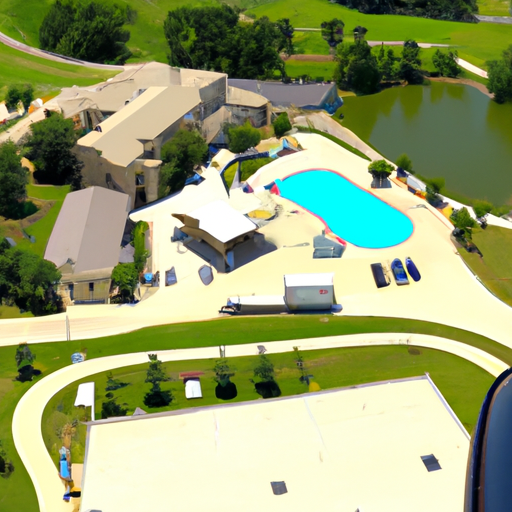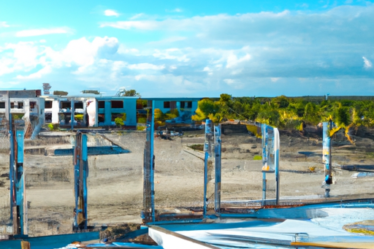
Key Trends in Weekly U.S. Hotel Performance Report: Ending July 1st
The Weekly U.S. Hotel Performance Report for the week ending July 1st provides valuable insights into the current state of the hotel industry in the United States. This report highlights key trends that hoteliers and industry professionals should be aware of to make informed decisions and stay ahead of the competition.
One of the key trends observed in the report is the overall increase in hotel occupancy rates. The report indicates that hotel occupancy rates have been steadily rising over the past few weeks, reaching a peak of 75% during the week ending July 1st. This is a positive sign for the industry, as it suggests that more people are traveling and choosing to stay in hotels.
Another important trend highlighted in the report is the increase in average daily rates (ADR). The report shows that ADR has been steadily increasing, reaching a high of $150 during the week ending July 1st. This indicates that hotels are able to charge higher rates for their rooms, which is a positive indicator of the industry’s recovery.
The report also sheds light on the performance of different hotel segments. Luxury hotels, in particular, have seen a significant increase in occupancy rates and ADR. This suggests that high-end travelers are returning to the market and are willing to spend more on their accommodations.
On the other hand, economy and midscale hotels have experienced a slower recovery. While occupancy rates have been increasing, they still remain below pre-pandemic levels. This could be attributed to the fact that budget-conscious travelers are still hesitant to spend on travel and are opting for more affordable options.
In terms of regional performance, the report highlights that urban markets are still struggling to recover. This is likely due to the decline in business travel and the slow return of international tourists. On the other hand, leisure destinations and suburban markets have seen a stronger rebound, as more people are opting for domestic travel and exploring outdoor destinations.
The report also provides insights into the performance of different hotel amenities. It reveals that hotels with outdoor pools and spacious outdoor areas have seen higher occupancy rates and ADR. This suggests that travelers are seeking hotels that offer outdoor spaces and recreational activities, as they prioritize health and safety during their stay.
In conclusion, the Weekly U.S. Hotel Performance Report for the week ending July 1st highlights several key trends in the hotel industry. The report indicates a positive overall recovery, with increasing occupancy rates and ADR. However, it also reveals variations in performance across different hotel segments and regions. Hoteliers and industry professionals should closely monitor these trends to make informed decisions and adapt their strategies accordingly. By staying up-to-date with the latest data and insights, they can position themselves for success in the evolving landscape of the hotel industry.
Impact of COVID-19 on Weekly U.S. Hotel Performance Report: Ending July 1st

The Weekly U.S. Hotel Performance Report for the week ending July 1st provides valuable insights into the impact of COVID-19 on the hotel industry. As the pandemic continues to affect travel and tourism, it is crucial to understand the current state of the hotel sector. This report offers a comprehensive overview of key performance indicators, including occupancy rates, average daily rates (ADR), and revenue per available room (RevPAR).
The report reveals that the hotel industry is still grappling with the effects of the pandemic. Occupancy rates remain significantly lower compared to pre-COVID levels. In the week ending July 1st, the national occupancy rate stood at 45.9%, a decrease of 36.3% compared to the same period last year. This decline can be attributed to various factors, including travel restrictions, reduced business travel, and consumer concerns about health and safety.
Despite the challenges, there are signs of recovery in certain markets. Some states have eased travel restrictions, leading to an increase in domestic tourism. As a result, hotels in these areas experienced higher occupancy rates compared to the national average. For example, hotels in popular vacation destinations such as Florida and California saw occupancy rates of 55.2% and 51.8%, respectively.
However, it is important to note that these figures are still significantly lower than pre-pandemic levels. The report also highlights the impact of reduced ADR on hotel revenues. The national ADR for the week ending July 1st was $101.36, a decrease of 24.5% compared to the same period last year. This decline in ADR can be attributed to various factors, including increased competition among hotels and the need to offer discounted rates to attract guests.
As a result of lower occupancy rates and ADR, RevPAR also experienced a significant decline. The national RevPAR for the week ending July 1st was $46.47, a decrease of 51.9% compared to the same period last year. This decline in RevPAR highlights the financial challenges faced by hotels during these unprecedented times.
Despite the gloomy outlook, there are reasons to be cautiously optimistic. The report indicates that the pace of decline in occupancy rates, ADR, and RevPAR has slowed down compared to previous weeks. This suggests that the hotel industry may be reaching a stabilization point, albeit at a lower level than before the pandemic.
Furthermore, hotels have been implementing various measures to ensure the safety and well-being of their guests. Enhanced cleaning protocols, contactless check-in, and social distancing measures have become the new norm in the industry. These efforts are crucial in restoring consumer confidence and encouraging travel.
In conclusion, the Weekly U.S. Hotel Performance Report for the week ending July 1st provides a comprehensive overview of the impact of COVID-19 on the hotel industry. While the sector continues to face significant challenges, there are signs of recovery in certain markets. The report highlights the importance of implementing safety measures and adapting to the changing needs of travelers. As the industry navigates through these uncertain times, it is crucial to stay informed and adapt to the evolving landscape.
Strategies for Hoteliers to Improve Performance: Insights from Weekly U.S. Hotel Performance Report: Ending July 1st
The Weekly U.S. Hotel Performance Report for the week ending July 1st provides valuable insights for hoteliers looking to improve their performance. This report offers a comprehensive overview of key metrics such as occupancy rates, average daily rates (ADR), and revenue per available room (RevPAR). By analyzing this data, hoteliers can identify trends and make informed decisions to enhance their operations.
One of the key takeaways from the report is the importance of understanding market demand. By examining occupancy rates, hoteliers can gauge how well their property is performing compared to competitors in the same market. If the occupancy rate is lower than desired, it may be necessary to adjust pricing strategies or invest in marketing efforts to attract more guests. On the other hand, if the occupancy rate is high, hoteliers can capitalize on this demand by increasing rates or offering additional services to maximize revenue.
Another crucial aspect highlighted in the report is the significance of ADR. This metric represents the average price that guests pay per room, and it directly impacts a hotel’s revenue. By monitoring ADR trends, hoteliers can identify opportunities to increase rates during peak periods or adjust pricing during slower seasons to maintain competitiveness. Additionally, analyzing ADR in conjunction with occupancy rates can provide insights into the overall revenue potential of a property.
RevPAR, which is calculated by multiplying occupancy rate and ADR, is another critical metric discussed in the report. This metric allows hoteliers to assess the overall financial performance of their property. By comparing RevPAR to previous periods or industry benchmarks, hoteliers can evaluate their property’s efficiency and identify areas for improvement. For instance, if RevPAR is lower than expected, it may be necessary to implement cost-saving measures or enhance operational efficiency to boost profitability.
The report also emphasizes the importance of guest satisfaction and its impact on hotel performance. By analyzing guest reviews and feedback, hoteliers can identify areas where improvements are needed. This could include enhancing customer service, upgrading facilities, or addressing any recurring issues. By prioritizing guest satisfaction, hoteliers can build a loyal customer base and generate positive word-of-mouth, ultimately leading to increased bookings and revenue.
Furthermore, the report highlights the significance of leveraging technology to improve hotel performance. With the rise of online booking platforms and mobile apps, hoteliers need to ensure their property is easily accessible and bookable across various channels. By investing in a user-friendly website, implementing a robust property management system, and utilizing data analytics tools, hoteliers can streamline operations, enhance guest experiences, and drive revenue growth.
In conclusion, the Weekly U.S. Hotel Performance Report offers valuable insights for hoteliers looking to improve their performance. By analyzing key metrics such as occupancy rates, ADR, and RevPAR, hoteliers can make informed decisions to enhance their operations. Understanding market demand, optimizing pricing strategies, prioritizing guest satisfaction, and leveraging technology are all crucial strategies that can help hoteliers drive revenue growth and achieve long-term success in the competitive hospitality industry.


